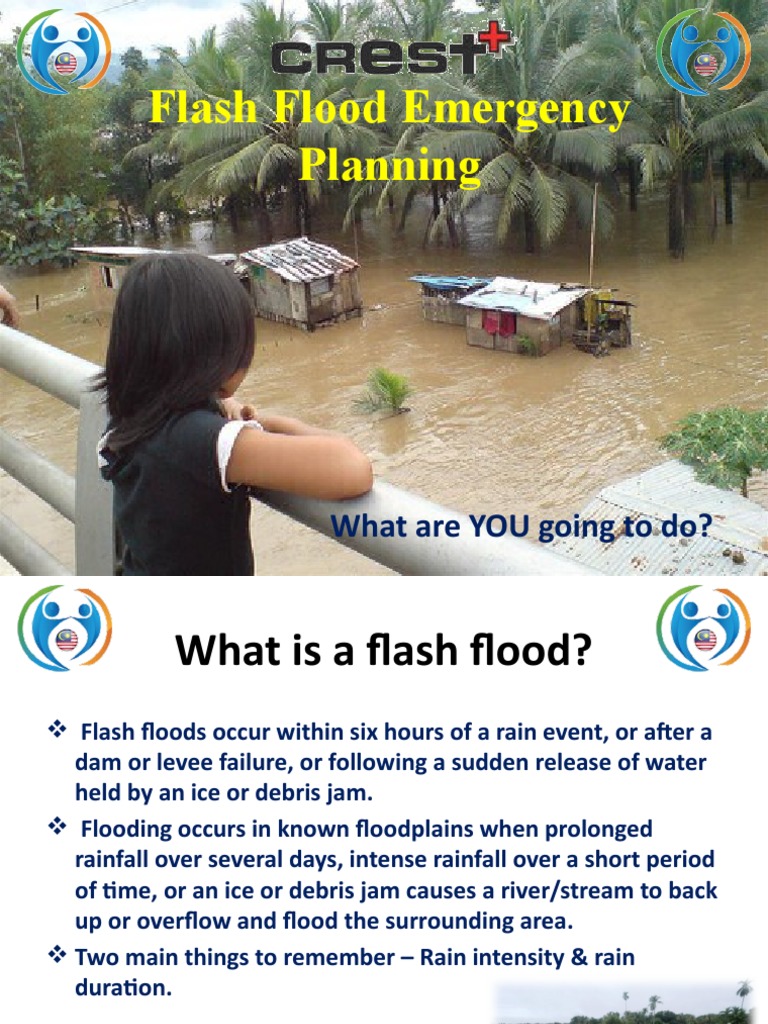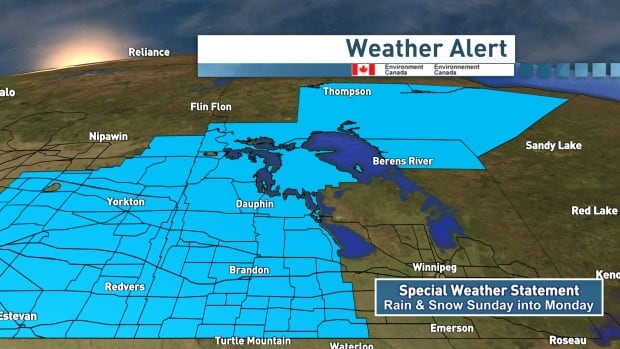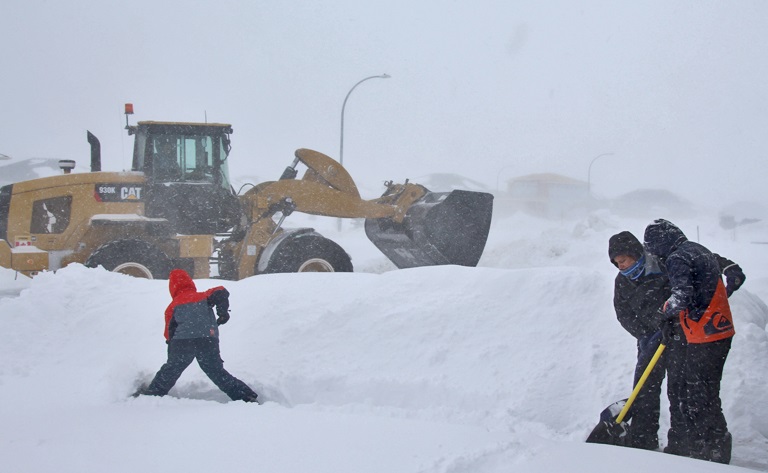Flash Flood Emergency: Causes, Impacts, And Survival Tips

Table of Contents
Understanding the Causes of Flash Floods
Flash floods, characterized by their rapid onset and significant water volume, are triggered by a combination of factors. Understanding these causes is the first step in effective flood preparedness.
Intense Rainfall
Heavy rainfall in a short period overwhelms drainage systems, leading to rapid flooding. This is the most common cause of flash floods.
- Thunderstorms: Slow-moving thunderstorms can dump immense amounts of rain in a localized area, quickly exceeding the capacity of natural and artificial drainage systems.
- Monsoonal Weather Patterns: Regions experiencing monsoons are particularly vulnerable due to prolonged periods of intense rainfall.
- Localized Downpours: Even seemingly minor weather events can cause flash flooding if the rainfall is concentrated in a small geographical area.
- Dam or Levee Failures: The failure of a dam or levee can release a catastrophic amount of water, resulting in devastating flash floods downstream. This is often unpredictable and requires immediate evacuation.
Geographic Factors
Certain geographical features increase vulnerability to flash flooding. These factors often exacerbate the impact of intense rainfall.
- Steep Slopes and Mountainous Terrain: Water flows much faster down steep slopes, leading to rapid accumulation in lower-lying areas.
- Urban Areas with Inadequate Drainage: Impervious surfaces like roads and buildings prevent water from absorbing into the ground, increasing runoff and overwhelming drainage systems. This is particularly problematic in older cities with outdated infrastructure.
- Dry Riverbeds that Quickly Fill with Water: Normally dry riverbeds can transform into raging rivers in minutes during flash floods, posing significant danger to those unaware of the sudden change.
- Deforestation and Soil Erosion: The removal of trees and vegetation reduces the soil's ability to absorb water, increasing runoff and the risk of flash floods.
Human Impact
Human activities significantly contribute to the risk and severity of flash floods. Understanding this human impact is vital for implementing effective mitigation strategies.
- Urban Development and Impermeable Surfaces: The widespread use of concrete and asphalt in urban areas increases surface runoff, leading to faster and more severe flooding.
- Deforestation: As mentioned previously, deforestation reduces the land's capacity to absorb rainfall, increasing the volume of water flowing into rivers and streams.
- Poorly Maintained Drainage Systems: Neglecting the maintenance of drainage systems can significantly reduce their capacity to handle heavy rainfall, increasing the risk of flash flooding.
- Construction in Floodplains: Building in floodplains, areas naturally prone to flooding, increases the risk of damage and loss of life during flash floods.
The Devastating Impacts of Flash Floods
The consequences of flash floods are far-reaching and can have severe and long-lasting effects on individuals, communities, and the environment.
Loss of Life and Injury
The rapid and powerful currents of flash floods pose a significant threat to life and limb.
- Drowning: Drowning is the leading cause of death during flash floods. The swift currents and debris can quickly overwhelm even strong swimmers.
- Injuries from Debris and Swift Currents: The force of the water and the debris it carries can cause severe injuries, including broken bones, head trauma, and lacerations.
- Exposure to Contaminated Water: Floodwaters often contain pollutants and contaminants that can lead to various waterborne illnesses.
Property Damage and Destruction
Flash floods can cause widespread damage to homes, businesses, and infrastructure.
- Flooding of Basements and Ground Floors: Homes and businesses located in low-lying areas are particularly vulnerable to flooding, often resulting in significant property damage.
- Damage to Roads, Bridges, and Other Infrastructure: The force of floodwaters can damage or destroy roads, bridges, and other crucial infrastructure, disrupting transportation and access to essential services.
- Erosion and Landslides: Flash floods can cause significant erosion, destabilizing slopes and leading to landslides, further increasing the risk to life and property.
- Contamination of Drinking Water Supplies: Floodwaters can contaminate drinking water sources, leading to waterborne diseases and shortages.
Economic Consequences
The economic impact of flash floods is substantial, affecting businesses, individuals, and governments.
- Damage to Businesses and Agricultural Lands: Flash floods can devastate businesses and agricultural lands, resulting in significant financial losses.
- Increased Insurance Claims: The cost of repairing flood damage leads to a surge in insurance claims, placing a strain on insurance companies and increasing premiums.
- Disruption of Transportation and Commerce: Damaged infrastructure and impassable roads disrupt transportation and commerce, leading to economic losses.
- Costs Associated with Rescue and Recovery Efforts: The cost of rescue and recovery operations after a flash flood can be significant, placing a burden on local and national governments.
Essential Flash Flood Survival Tips
Preparation and swift action are crucial for surviving a flash flood emergency.
Preparedness is Key
Proactive measures significantly increase your chances of survival.
- Develop a Family Emergency Plan: Establish a plan that outlines evacuation routes, communication strategies, and meeting points.
- Create a Go-Bag with Essential Supplies: Prepare a bag containing essential items such as water, non-perishable food, first-aid kit, medications, flashlight, radio, and extra clothing.
- Identify Safe Evacuation Routes: Know the safest routes to higher ground in your area.
- Know Your Flood Risk Level and Heed Warnings: Be aware of your area's flood risk and heed warnings issued by local authorities.
During a Flash Flood Emergency
Immediate action is vital during a flash flood.
- Evacuate Immediately if Instructed: Obey evacuation orders from local authorities without delay.
- Seek Higher Ground: Move to higher ground as quickly and safely as possible.
- Do Not Drive Through Flooded Areas – "Turn Around, Don't Drown": Floodwaters can be deceptively deep and fast-moving. Never attempt to drive through flooded areas.
- Stay Away from Power Lines and Downed Electrical Equipment: Floodwaters can conduct electricity, making downed power lines extremely dangerous.
- Listen to Emergency Broadcasts: Stay informed about the situation by listening to emergency broadcasts.
After a Flash Flood
Post-flood actions mitigate further risks.
- Avoid Floodwaters as They May Be Contaminated: Floodwaters often contain dangerous contaminants. Avoid contact until they are deemed safe.
- Report Damage to Authorities: Report any damage to your property or infrastructure to the appropriate authorities.
- Check on Neighbors and Loved Ones: Check on your neighbors and loved ones to ensure their safety and well-being.
- Follow Official Guidance on Cleanup and Recovery: Follow instructions from local authorities regarding cleanup and recovery efforts.
Conclusion
Flash floods are a serious threat, but understanding their causes, potential impacts, and practicing effective survival strategies can significantly improve your chances of staying safe. By being prepared, heeding warnings, and taking immediate action during a flash flood emergency, you can protect yourself and your community. Remember, the best way to face a flash flood emergency is through proactive preparation and informed decision-making. Stay informed about weather forecasts, develop a flash flood preparedness plan, and ensure you have a go-bag ready. Don't wait for a flash flood emergency to strike; prepare today for a safer tomorrow. Make a flash flood preparedness plan a priority for your family.

Featured Posts
-
 The Lewis Hamilton Factor Understanding The New F1 Regulations
May 26, 2025
The Lewis Hamilton Factor Understanding The New F1 Regulations
May 26, 2025 -
 Naomi Kempbell Vrazila London Noviy Obraz U Biliy Tunitsi
May 26, 2025
Naomi Kempbell Vrazila London Noviy Obraz U Biliy Tunitsi
May 26, 2025 -
 Analysis 25 Million Americans Participating In Tennis By August 2024
May 26, 2025
Analysis 25 Million Americans Participating In Tennis By August 2024
May 26, 2025 -
 Rocket Launch Scrubbed Blue Origin Cites Vehicle Subsystem Issue
May 26, 2025
Rocket Launch Scrubbed Blue Origin Cites Vehicle Subsystem Issue
May 26, 2025 -
 Wta Rome Zheng Qinwens Shock Win Against Sabalenka
May 26, 2025
Wta Rome Zheng Qinwens Shock Win Against Sabalenka
May 26, 2025
Latest Posts
-
 Press Release Joy Smith Foundation Official Launch
May 30, 2025
Press Release Joy Smith Foundation Official Launch
May 30, 2025 -
 Significant Snowfall Expected In Western Manitoba Tuesday Warning
May 30, 2025
Significant Snowfall Expected In Western Manitoba Tuesday Warning
May 30, 2025 -
 Joy Smith Foundation Launches A Media Advisory
May 30, 2025
Joy Smith Foundation Launches A Media Advisory
May 30, 2025 -
 10 20 Cm Of Snow Expected In Western Manitoba Stay Safe
May 30, 2025
10 20 Cm Of Snow Expected In Western Manitoba Stay Safe
May 30, 2025 -
 Tartan Mine Development Canadian Gold Corp Secures 300 000 In Funding
May 30, 2025
Tartan Mine Development Canadian Gold Corp Secures 300 000 In Funding
May 30, 2025
